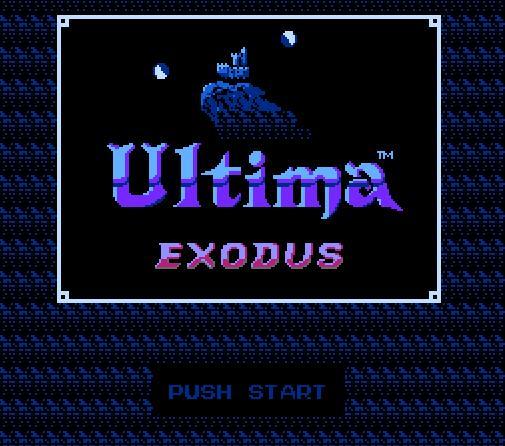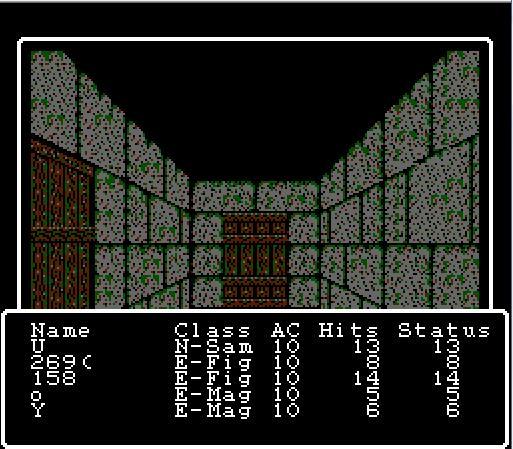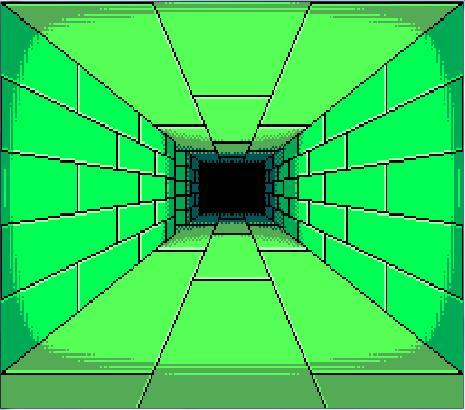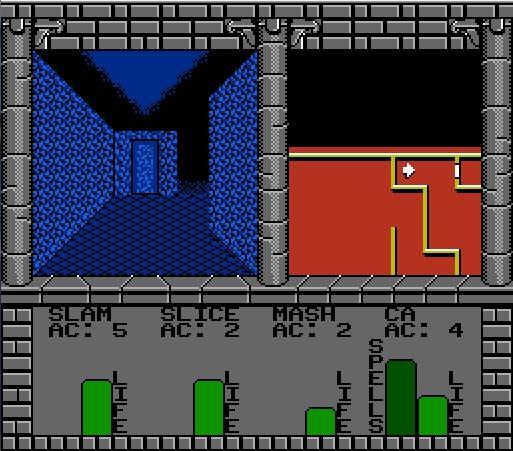Today the RPG, or Role Playing Game, is certainly a term most gamers are familiar with. Some of us have even been lucky enough to have the time to plow through many of our favorite RPGs while others quickly gave up on the genre. In the age of the 8-bit machine, the RPG was still in its earliest stages, but it was here that many of the titles and ideas you see today sowed their seeds (and where some of the bad were left to rot, or even worse, REPEAT!).
For the most part, during the age of the 8-bit Nintendo and Sega Master System, the RPG was obscure. Although you did see features in Nintendo Power about Dragon Warrior and much later Final Fantasy, never did any RPG receive the hype that a Mario or Zelda release warranted. If an RPG made it on the radar at all, it was usually forgotten quickly after. Despite the fact that many RPGs did not get the attention that other games received, RPGs were not poorly produced pieces of junk. In fact, RPGs opened up a world of creativity and flexibility to the gaming community that distinctly separated them from the rigid world of platform, adventure, sports, puzzle, and action games.
In this article I want to take a look at some of the RPGs that I have played for the NES and Sega where I will compare, contrast, decide what worked and what did not, and then have you, the reader, point out everywhere I went wrong. So here I will begin, and welcome you on this journey through the 8-bit world of RPGs.

Ultima III: Exodus
Before I was even aware there was an RPG genre, Ultima quickly and easily captured my imagination. I still remember that feature in one of the earliest Nintendo Power issues. The game looked like nothing I had ever witnessed. On the pages before me was a list of characters larger than I had ever seen. I thought choosing between Mario, Luigi, Toad, and Princess was cool in Mario 2. Looking at the list of eleven different characters in Ultima was INSANE! I never saw mention of the game in anything I read or saw after that article and it was only after scouring about ten different stores that I was finally able to mail order the game. Nobody, not even my local Toys R Us was carrying it.
When I finally got the game, I found it very confusing, along with an extremely long and silent intro that you always had to sit through. You couldn’t just press start and have the game go. Although I was very excited to finally play Ultima in real life, rather than in the forest where swords were sticks and the bad guys were trees and plants, as I tried to create my first ever party of Ultima warriors I was beginning to feel as if the imaginary version was much better than the real one. All I wanted to do was make my party, lead by a ranger who would be the strongest ranger, capable of handling any situation with his array of spells and fighting ability.
Once I figured out how to make my party and began to explore the world of Ultima, my imaginary concept was crumbling, but in its place was equally exciting potential. Every town seemed huge, with tons of people who seemed to say things I had zero interest in reading. The towns throughout Sosaria were easy enough to find, except for Dawn, which made absolute no sense to me. The whole Moon system seemed completely illogical and thus I completely ignored that aspect of the game as much as I could. Usually I would race to find each town’s armory and weapon shop in hopes of finding the coolest, strongest weapons. With every town I entered however, I was disappointed to find the exact same list of weapons and armor to buy. The exception being in Dawn, but as I already said, the appearance and disappearance of this town seemed to be almost magical. Usually when I was lucky enough to stumble into Dawn by accident, I never had the money to buy anything worthwhile.
Once the overland map had been explored and I realized that every town was providing the same things to buy, I tried exploring the caves. The caves were set up in one of the most retarded formats that has ever graced the RPG genre, and this completely shitty format was hardly an Ultima exclusive. The format goes something like this. The player is always given limited or no information about the cave. The view inside the cave is from a first-person perspective, however you only can see one step in front of you. When you engage in a fight, you usually end up encountering enemies that are significantly stronger than anything you fought before. The risks always seem extreme and the rewards, although vital to completing the game, were difficult, impossible, or just fucking aggravating to find. Even when I would know what I was looking for in a particular cave, I usually either avoided it anyway because I did not want to lose the characters so dear to me, or I died while wandering aimlessly in the dimly lit version of a cave, one step at a time. Besides the fact that you risk losing your characters, it is virtually impossible to figure out where to go without actually mapping out each cave through trial and error. Since there are no landmarks or distinguishing features in ANY of the caves, once I lost my bearings (which easily happened after five steps or so) I would often find myself going deeper and deeper into danger. The only saving grace in Ultima were the “ascend” and “rise” spells.
Here’s a list of other games that I have played with this same/similar shitty format:
Wizardry I and II

Phantasy Star

Swords and Serpents

Enjoy torturing yourself…..
Its pretty sad that this style of navigating made it into so many games and it certainly did nothing to the overall standing of RPGs. In both Wizardry and Swords and Serpents, the entire game is based on this ghetto-ass, first-person, explore-the-cave-blindly-at-the-risk-of-losing-everything style. BOO!
The process of improving your characters in Ultima was one of inconvenience. Unlike most RPGs, which operate on an experience-based system, your characters’ attributes were improved by spending money at stat-specific shrines. For 100 gold you got one point towards whatever attribute that shrine was associated with (e.g. Wisdom shrine gave you wisdom). It was kind of cool the first time I got all the spells, but other than that, getting stronger took so much money and time I usually gave up before I ever maxed out even one character.
To top off the annoyingness, the best armor and weapon in the game are hidden. If you even discover where the sword and armor are buried via the awesome hints that you have received you still need to recover the corresponding pick to dig up the item. I think I found the picks, but had no clue where to dig.
So what was good about this game?
While I was writing this article I decided to give Ultima III: Exodus another whirl around the block for old time’s sake. It only took me about 30 minutes to feel like I was wasting my time, losing big in the replayability score. Due to my rather brief enjoyment of the game, I began to wonder why I ever continued to play it in the first place. Now the obvious answer is that I had no choice! I played Ultima because I was not going to get a new game any time soon. But what made the game good? I think the best way for me to answer this is that Ultima was better as a game in my imagination than it was in reality. Ultima was awesome because it had so much potential with the character system and quite possibly layed the groundwork for later games like Final Fantasy Tactics. However, the potential was never met because the attribute system was much too simplistic. There just was not enough to work with to significantly differentiate all the characters. I mean seriously, what the hell was the point of the alchemist, thief, illusionist, and barbarian? The ideas were there and the combination of a big world, lots of caves, lots of towns, lots of characters, a decent amount of weapons and armor, puzzles, and somewhat of a story (more so if you bought the strategy guide) could have made for a great game but too much of it fell short in terms of substance.
So here’s my arbitrary rating scale for Old Skool RPGs:
Story: D (Unless you get the strategy guide and read it; then its more like a B.)
Fighting system: D (If you make an input mistake, too bad, you lose your turn.)
Magic variety: D (Lots of useless spells or spells that are too similar. The cleric has two attack spells and two healing spells and lots of garbage in between.)
Character choices: B (I already talked about my complaints.)
Attribute system: C (I like the idea of the race combination with the jobs, but four attributes doesn’t cut it. I’m not even sure if DEX matters at all other than opening treasure which you can open with magic from the beginning.)
Potential impact for future games: A (The ideas were there; the execution, not so much.)
Marketing and availability: F (Like I said, I saw this game mentioned once in Nintendo Power and it was impossible to find for purchase.)

















